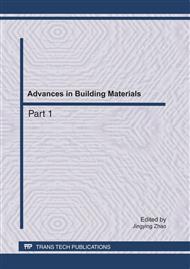p.1846
p.1851
p.1856
p.1862
p.1867
p.1872
p.1877
p.1882
p.1886
Study on Fracture Evolution of Complicated Cavity Group-Surrounding Rock System Structure Effect
Abstract:
It is very important to study the structure effect of cavity group for controlling disasters in engineering and coordinating mining of the hidden danger resources. The cavity group structure was defined and classified. The structure effect of the twelve kinds of working conditions were simulated by using Rock Failure Process Analysis code (RFPA2D). the results show as follows: 1) The stability order of the typical cavity group structures was the second one, the third one and the first one; 2) The phenomena of small cavities interpenetrating and forming a big cavity often appeared in the kinds of the first and the third structure in the process of system catastrophe, but not in second structure; 3) The system appeared catastrophe easily with the number rising of the first structure, the third structure taking the second place and the second structure taking the last place; 4)The risk of the system consisting of two groups of the third structures was greater than one of the system consisting of one group of the first structure; 5) he more the number of the poor stability structures was in the up of system, the more poor stability the system had; 6) The same structures were placed in the upper and lower order in system, the lower structure would appear prior into the failure and instability status.
Info:
Periodical:
Pages:
1867-1871
Citation:
Online since:
May 2011
Authors:
Keywords:
Price:
Сopyright:
© 2011 Trans Tech Publications Ltd. All Rights Reserved
Share:
Citation:


